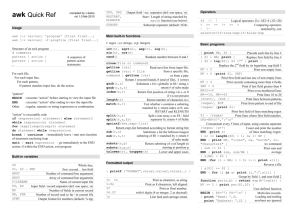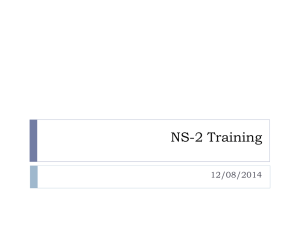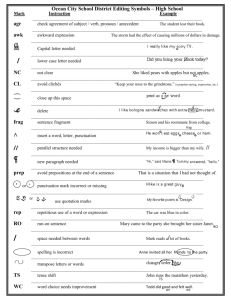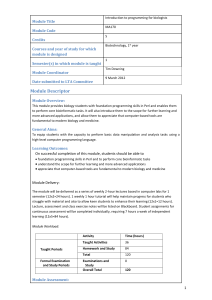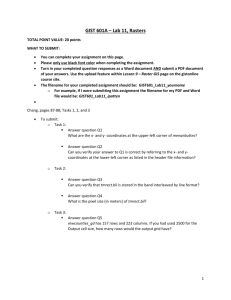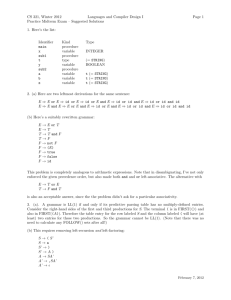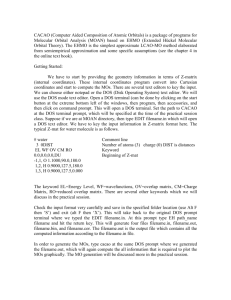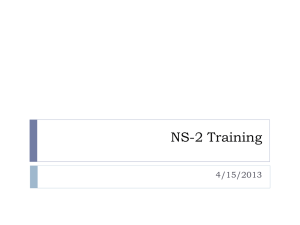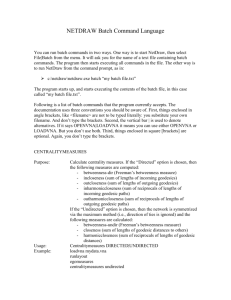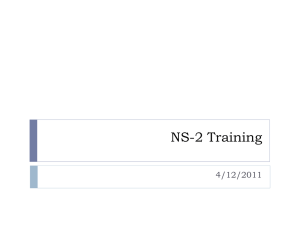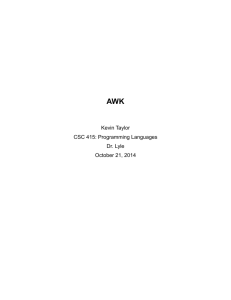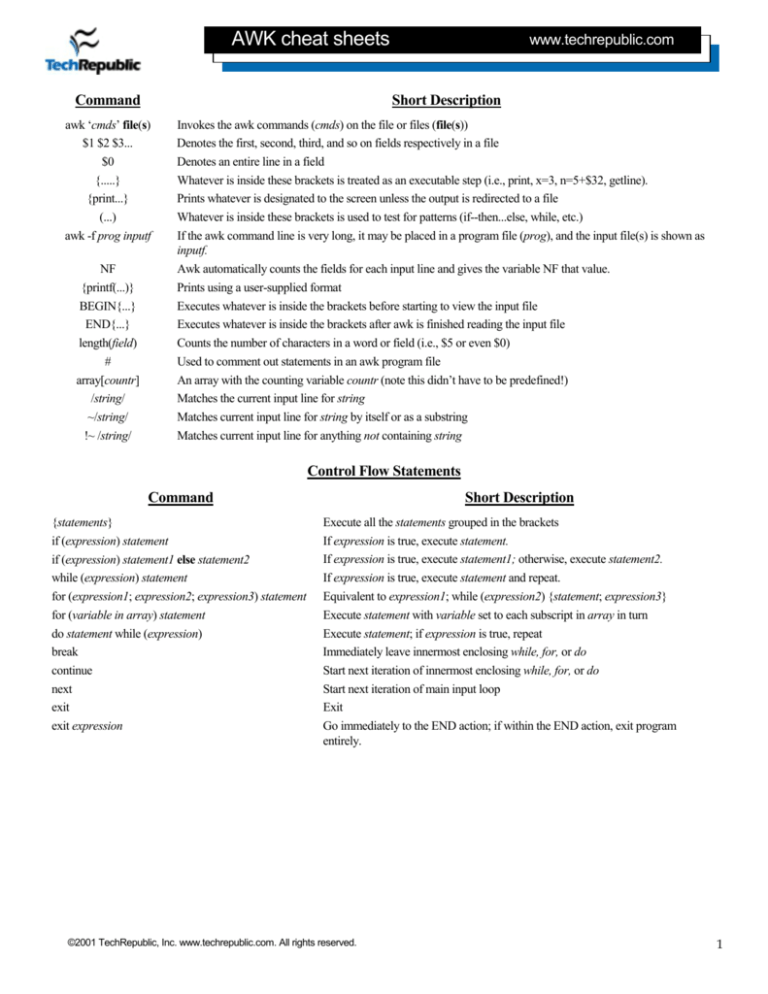
AWK cheat sheets
Command
Short Description
awk ‘cmds’ file(s)
$1 $2 $3...
$0
{.....}
{print...}
(...)
awk -f prog inputf
NF
{printf(...)}
BEGIN{...}
END{...}
length(field)
#
array[countr]
/string/
~/string/
!~ /string/
www.techrepublic.com
Invokes the awk commands (cmds) on the file or files (file(s))
Denotes the first, second, third, and so on fields respectively in a file
Denotes an entire line in a field
Whatever is inside these brackets is treated as an executable step (i.e., print, x=3, n=5+$32, getline).
Prints whatever is designated to the screen unless the output is redirected to a file
Whatever is inside these brackets is used to test for patterns (if--then...else, while, etc.)
If the awk command line is very long, it may be placed in a program file (prog), and the input file(s) is shown as
inputf.
Awk automatically counts the fields for each input line and gives the variable NF that value.
Prints using a user-supplied format
Executes whatever is inside the brackets before starting to view the input file
Executes whatever is inside the brackets after awk is finished reading the input file
Counts the number of characters in a word or field (i.e., $5 or even $0)
Used to comment out statements in an awk program file
An array with the counting variable countr (note this didn’t have to be predefined!)
Matches the current input line for string
Matches current input line for string by itself or as a substring
Matches current input line for anything not containing string
Control Flow Statements
Command
{statements}
if (expression) statement
if (expression) statement1 else statement2
while (expression) statement
for (expression1; expression2; expression3) statement
for (variable in array) statement
do statement while (expression)
break
continue
next
exit
exit expression
Short Description
Execute all the statements grouped in the brackets
If expression is true, execute statement.
If expression is true, execute statement1; otherwise, execute statement2.
If expression is true, execute statement and repeat.
Equivalent to expression1; while (expression2) {statement; expression3}
Execute statement with variable set to each subscript in array in turn
Execute statement; if expression is true, repeat
Immediately leave innermost enclosing while, for, or do
Start next iteration of innermost enclosing while, for, or do
Start next iteration of main input loop
Exit
Go immediately to the END action; if within the END action, exit program
entirely.
©2001 TechRepublic, Inc. www.techrepublic.com. All rights reserved.
1
AWK cheat sheets
Expression
www.techrepublic.com
Meaning
Metacharacters
\
^
$
.
[ABDU]
A|B
DF
R*
R+
R?
NR==10, NR==25
Used in an escape sequence to match a special symbol (e.g., \t matches a tab and \* matches * literally)
Matches the beginning of a string
Matches the end of a string
Matches any single character
Matches either character A, B, D, or U; may include ranges like [a-e-B-R]
Matches A or B
Matches D immediately followed by an F
Matches zero or more Rs
Matches one or more Rs
Matches a null string or R
Matches all lines from the 10th read to the 25th read
Escape Sequences
\b
\f
\n
\r
\t
\ddd
\c
Meaning
Backspace
Form feed
Newline (line feed)
Carriage return
Tab
Octal value ddd, where ddd is 1 to 3 digits between 0 and 7
Any other character literally (e.g., \\ for backslash, \” for “, \* for *, and so on)
Operator
<
<=
==
!=
>=
>
~
!~
Meaning
Less than
Less than or equal to
Equal to
Not equal to
Greater than or equal to
Greater than
Matched by (used when comparing strings)
Not matched by (used when comparing strings)
©2001 TechRepublic, Inc. www.techrepublic.com. All rights reserved.
2
AWK cheat sheets
www.techrepublic.com
Built-In Variables
Variable
ARGC
ARGV
FILENAME
FNR
FS
NF
NR
OFMT
OFS
ORS
RLENGTH
RS
RSTART
SUBSEP
Meaning
Default
Number of command line arguments
Array of command line arguments
Name of current input file
Record number in current file
Controls the input field separator
Number of fields in current record
Number of records read so far
Output format for numbers
Output field separator
Output record separator
Length of string matched by match function
Controls the input record separator
Start of string matched by match function
Subscript separator
–
–
–
–
one space
–
–
%.6g
one space
\n
–
\n
–
\034
Built-In String Functions
Function
r
s and t
n and p
gsub(r,s)
gsub(r,s,t)
index(s,t)
length(s)
match(s,r)
split(s,a)
split(s,a,fs)
sprintf(fmt,expr-list)
sub(r,s)
sub(r,s,t)
substr(s,p)
substr(s,p,n)
Description
Represents a regular expression
Represent string expressions
Integers
Substitute s for r globally in $0; return number of substitutions made
Substitute s for r globally in string t; return number of substitutions made
Return first position of string t in s, or 0 if t is not present
Return number of characters in s
Test whether s contains a substring matched by r; return index or 0; sets RSTART and RLENGTH
Split s into array a on FS; return number of fields
Split s into array a on field separator fs; return number of fields
Return expr-list formatted according to format string fmt
Substitute s for the leftmost longest substring of $0 matched by r; return # of subs made
Substitute s for the leftmost longest substring of t matched by r; return # of subs made
Return suffix of s starting at position p
Return substring of s of length n starting at position p
©2001 TechRepublic, Inc. www.techrepublic.com. All rights reserved.
3
AWK cheat sheets
www.techrepublic.com
Expression Operators
Operation
assignment
conditional
logical OR
logical AND
array membership
matching
relational
concatenation
add, subtract
multiply, divide, mod
unary plus and minus
logical NOT
exponentiation
increment, decrement
field
grouping
Operators
= += -= *= /= %= ^=
?:
||
&&
in
~ !~
< <= > >= == !=
+*/%
+!
^
++ -$
()
Example
x=x*2
x?y:z
x || y
x && y
i in a
$1 ~ /x/
x == y
“a” “bc”
x+y
x%y
-x
!$1
x^y
++x, x++
$i + 1
($i)++
Meaning of Example
x=x*2
If x is true, then y; else z
1 if x or y is true; 0 otherwise
1 if x and y are true; 0 otherwise
1 if a[i] exists; 0 otherwise
1 if the first field contains an x; 0 otherwise
1 of x equals y; 0 otherwise
“abc”; there is no explicit concatenation operator
Sum of x and y
Remainder of x is divided by y (fraction)
Negative x
1 if $1 is zero or null; 0 otherwise
xy
Add 1 to x
Value of the ith field, plus 1
Add 1 to the value of the ith field
Output Statements
Command
print
print expression, expression, ...
print expression, expression, ... > filename
print expression, expression, ... >> filename
print expression, expression, ... | command
printf(format, expression, expression, ...)
printf(format, expression, expression, ...) > filename
printf(format, expression, expression, ...) >> filename
printf(format, expression, expression, ...) | command
close(filename), close(command)
system(command)
Short Description
Print $0 to the screen.
Print expression’s, separated by OFS, terminated by ORS.
Print to filename rather than just to the screen.
Append to the end of filename rather than just to the screen.
Print to standard input of command.
Printf statements are just line print statements except the first argument
specifies output format.
Break connection between print and filename or command.
Execute command, value is status return of command.
©2001 TechRepublic, Inc. www.techrepublic.com. All rights reserved.
4
AWK cheat sheets
www.techrepublic.com
Printf Format Control Characters
Character
Print Expression as...
c
d
e
f
g
o
s
x
%
ASCII character
Decimal integer
[-]d.ddddddE[+-]dd
[-]ddd.dddddd
e or f conversion; whichever is shorter, with nonsignificant zeroes suppressed
Unsigned octal number
String
Unsigned hexadecimal number
Print a %; no argument is consumed
format
modifier 1: – left
modifier 2: width
modifier 3: .prec
%c
%d
%5d
%e
%f
%7.2f
%g
%.6g
%o
%06o
%x
%s
%10s
%-10s
%.3s
%10.3s
%-10.3s
%%
Examples of Printf
$1
printf(format, $1)
Justifies expression
Pads field to width as needed; leading 0 pads with zeroes
Maximum string width, or digits to the right of the decimal point
97
a
84.23
84
84.23
___84
45.363
4.536300e+01
36.22
36.220000
30.238
__30.24
97.5
97.5
6.23972482
6.239725
97
141
97
000141
97
61
January
January
January
___January
January
January___
January
Jan
January
_______Jan
January
Jan_______
January
%
©2001 TechRepublic, Inc. www.techrepublic.com. All rights reserved.
5
AWK cheat sheets
www.techrepublic.com
SAMPLES (1/2)
➨ What it does...
Format:
→
awk command
Commands:
➨ Print the total number of lines in filename to the screen.
→ awk ‘END {print NR}’ filename
➨ Prints the 10th input line to the screen.
→ awk ‘NR == 10 {print}’ filename
➨ The print command is to print only the first field ($1) of every line found in the file filename.
→ awk ‘{print $1}’ filename
➨ Print the last field of the last input line to the screen.
→ awk ‘{field=$NR} END {print field}’ filename
➨ Print all input lines ($0) from filename that have more than 4 fields (NF>4).
→ awk ‘NF > 4 {print $0}’ filename
➨ Print the values in the first ($1), fourth ($4), and third ($3) fields from every line in the file filename in the listed order to the screen
separated by the output field separator (OFS) which is one space by default.
→ awk ‘{print $1, $4, $3}’ filename
➨ This searches for fields that start (^) with MDATA (~/MDATA/) in the first field ($1). For every match, it increments linesdata by one
(++linesdata). After the entire filename has been read, the program prints to the screen the number of lines that met the criteria along
with a little sentence quoting the name of the input file ($FILENAME).
→ awk ‘BEGIN {linesdata=0} $1 ~/^MDATA/ {++linesdata} END {print linesdata “ Lines \
start with MDATA in the first field from “ $FILENAME}’ filename
➨ IF the value in the first field in filename is equal to 0, THEN the entire line ($0) will be printed to the screen.
→ awk ‘($1 == 0) {print $0}’ filename
➨ This will find the largest time value in the first field in the entire file and after finishing reading the file, it will print the maximum time
found in the first field followed by the entire line from which the value came.
→ awk ‘($1 > timemax) {timemax = $1; maxinput = $0} \
END {print timemax, maxinput}’ filename
©2001 TechRepublic, Inc. www.techrepublic.com. All rights reserved.
6
AWK cheat sheets
www.techrepublic.com
SAMPLES (2/2)
➨ This will translate a file with: MDATA time value into a file with time value only and separated by tabs (OFS=“\t”)
→ awk ‘while ($1~/MDATA/) {print $2,$3} BEGIN {OFS=“\t”}’ inputfile
➨ This will print the fourth field if the first field begins(^) with either “owe” or (|) “debt.”
→ awk ‘($1~/^(owe|debt)/) {print $4}’ inputfile
➨ This will do the same as the previous command except it will also sum the fourth field (sum=sum + $4) and print the total at the end of the
list.
→ awk ‘BEGIN {sum=0} \
($1~/^(owe|debt)/) {sum=sum + $4; print $4} \
END {print “Your total debt is”, sum}’ inputfile
➨ This will filter lines that contain (begins (^) and ends with ($)) capital “R” followed by either a 0 or 1 then followed by a number 0 through
9. Then, these lines will be counted (++n adds 1 to n) and printed with the number order that they occurred (e.g., if there are five lines
that match the expression, they will be printed in order and labeled 1 2 3 4 5 respectively).
→ awk ‘BEGIN {n=0; OFS=“\t”} \
($0~/^R[01][0-9]$/) {++n; print n, $0}’ inputfile
➨ All output from these commands will go to the screen, but you can use UNIX redirection commands to “pipe” the output into another
command or > “redirect” the output to a file or even >> “append” the output to the and of a pre-existing file.
➨ Awk is also very useful when you need to put information in a different format for a script. Just include the formatting awk statement in
your script.
©2001 TechRepublic, Inc. www.techrepublic.com. All rights reserved.
7

